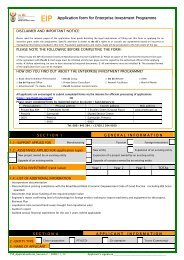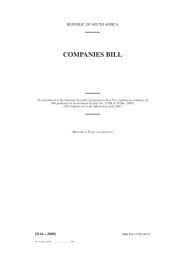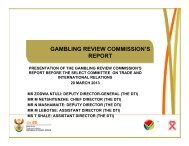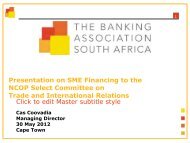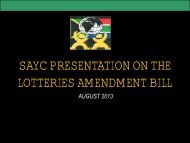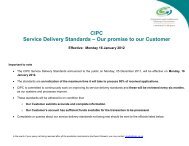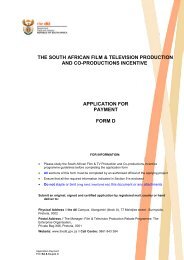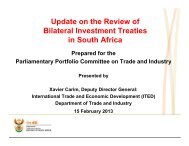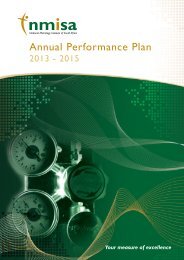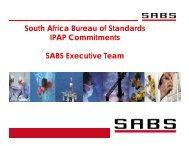Copyright Review Commission Report - ICT Law and Regulation ...
Copyright Review Commission Report - ICT Law and Regulation ...
Copyright Review Commission Report - ICT Law and Regulation ...
- No tags were found...
Create successful ePaper yourself
Turn your PDF publications into a flip-book with our unique Google optimized e-Paper software.
IPRS uses the st<strong>and</strong>ard tariffs in respect of public performances for all users. The tariffs are determined by IPRS based oninternational benchmarking <strong>and</strong> taking into account local business activities. They are adjusted each year, taking into accountthe CPIX for the country. Users who are unhappy with the tariffs are able to refer the matter to the <strong>Copyright</strong> Board forreview.With regard to broadcasters (communication to public), the sliding scales tariffs are based on the music usage by therespective broadcasters – for example, a broadcaster that dedicates 90% of the available time to music pays 9% of the totaladvertising revenue; for 80% usage, 8% is payable; <strong>and</strong> for 70% usage, 7% is payable; <strong>and</strong> the ratio is the same for theother utilisation levels (60%, 50%, 40%, 30%, 20%, 10%). With regard to the sound recordings, the <strong>Copyright</strong> Board recentlycompleted a case where it was decided that the broadcasters should pay a flat rate of 2% (of the total advertising revenue)for sound recording. The maximum fees payable by the Indian radio broadcasters (excluding mechanical rights) is 12% (10%+ 2%) <strong>and</strong> the minimum fees amount to 2% (0% + 2%), assuming that the radio station does not play music.All broadcasters are required to keep cue sheets, which are submitted to the relevant collecting societies on a monthly basis.The non-broadcasting users do not use the cue sheets <strong>and</strong> most pay their annual royalty fees in advance.The collecting societies do not collect royalties on behalf of non-members. With regard to non-broadcasters, it is not possibleto distinguish between the members <strong>and</strong> non-members because there are no cue sheets <strong>and</strong>, by default, the money for thenon-members is collected <strong>and</strong> distributed to the members.3.5. DISTRIBUTION OF ROYALTIESRoyalties are distributed to members twice a year, in September <strong>and</strong> February. The money collected may not be used foranything other than royalty distribution <strong>and</strong> administration, without the approval of the members. This can be evidencedthrough the audited financial statements of IPRS. There are no investments, other than the cash on h<strong>and</strong> (waiting fordistribution) <strong>and</strong> fixed assets (for operational requirements).The royalty distributions (from broadcasting <strong>and</strong> non-broadcasting users) are based on the broadcasting usage information.Any unclaimed royalties are retained by the collecting societies <strong>and</strong> written back after three years. The beneficiaries ofunclaimed royalties are not traced by the collecting societies.The administration cost (IPRS) as a percentage of the collections was 15,4% for 2009 <strong>and</strong> 13,3% for 2010.IPRS was not able to provide a split between local <strong>and</strong> foreign distributions because of the fact that most foreign artists haverepresentations in India.Interest earned from the cash on h<strong>and</strong> is distributed with royalties on the same ratio.For public performances (including mechanical rights), the distribution ratio is as follows: Authors = 20%, Composers = 30%, <strong>and</strong>- 138 -



